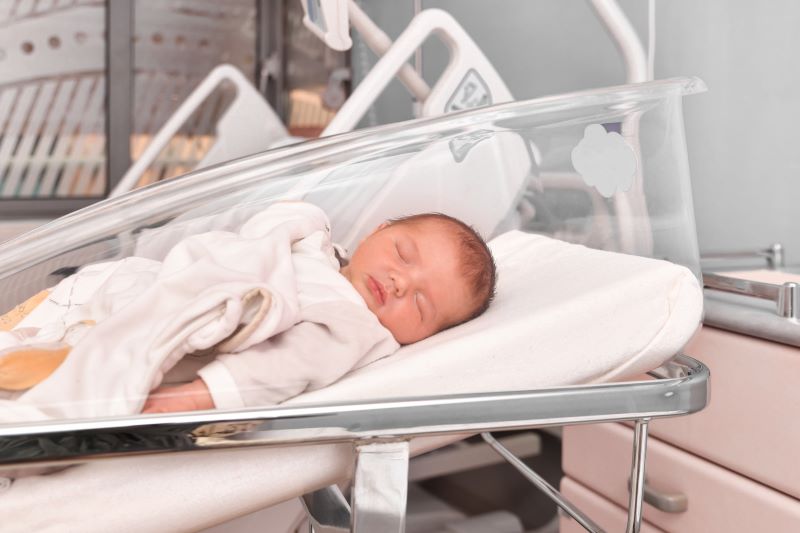Table of Contents
Ensuring the safety and security of infants in healthcare facilities is paramount. Regulatory requirements set by various agencies mandate hospitals to implement robust security measures to prevent infant abductions and mismatches. This blog explores these regulations and illustrates how Litum’s Infant Security RTLS solution helps healthcare facilities comply effectively.
The Joint Commission Standards
In the United States, The Joint Commission (TJC) sets stringent standards for infant security as part of its accreditation process. These standards are part of the National Patient Safety Goals (NPSGs) and Environment of Care (EC) requirements, specifically designed to enhance the safety of patients, including newborns.
- Security Systems: Hospitals must install electronic monitoring systems to track infants and alert staff to unauthorized movements. These systems often include RFID tags, alarmed exits, and real-time location systems (RTLS).
- Staff Training: Regular training sessions and drills must be conducted to ensure staff are prepared to respond swiftly to potential abduction attempts.
- Visitor Controls: Strict visitor identification procedures must be in place to control access to maternity and neonatal units.
How Litum Helps: Litum’s Infant Security RTLS uses precise Ultra-Wideband (UWB) technology to continuously monitor infants, providing real-time alerts for unauthorized movements. The system integrates seamlessly with existing security protocols and is compatible with LenelS2™ OnGuard® access control system, ensuring compliance with TJC standards. This integration enhances the overall security infrastructure by linking RTLS data with access control systems, streamlining incident responses, and improving coordination during emergencies.
Centers for Medicare & Medicaid Services (CMS)
The CMS also imposes regulations on healthcare facilities to safeguard patients. Compliance with these regulations is necessary for hospitals to receive federal funding and reimbursements.
- Patient Identification: CMS requires dual identification methods for infants, such as matching ID bands for mother and child, to prevent mismatches.
- Security Protocols: Hospitals must develop and implement detailed security protocols, including alarm systems and lockdown procedures during a suspected abduction.
How Litum Helps: Litum’s solution includes dual identification features and integrates with electronic health records (EHR) systems to ensure accurate patient matching and identification. The system’s robust security protocols, including alarm systems and real-time tracking, align with CMS requirements to enhance infant safety. Integration with LenelS2™ OnGuard® further strengthens these protocols by providing a unified security management platform.
State Regulations
Various states have enacted their own laws to enhance infant security in healthcare settings.
- California: Hospitals must have comprehensive infant security plans that include electronic monitoring and strict access control measures.
- Texas: Healthcare facilities are required to conduct regular security assessments and drills, and ensure that all staff are trained in abduction prevention protocols.
How Litum Helps: Litum’s RTLS solution is adaptable to state-specific regulations, offering customizable security plans that include comprehensive monitoring and access control. The system’s flexibility ensures compliance with state laws while providing top-tier security. Integration with LenelS2™ OnGuard® allows for seamless access control and incident management, enhancing compliance and security measures.

International Standards
Countries outside the United States also have stringent regulations to ensure infant security:
- United Kingdom: The NHS mandates the use of electronic tagging systems and secure access controls in maternity wards. Hospitals must follow specific guidelines to ensure the safety of newborns.
- Australia: Healthcare facilities must comply with national standards that include secure entry points, surveillance systems, and electronic monitoring of infants.
How Litum Helps: Litum’s global presence and adaptability allow it to meet international standards. The RTLS-enabled secure zones, surveillance integration, and precise monitoring ensure that hospitals worldwide can provide a safe environment for infants. Integration with LenelS2™ OnGuard® facilitates compliance with international standards by providing a cohesive security solution that integrates various security systems and protocols.
Best Practices for Compliance
To comply with these regulatory requirements and enhance infant security, healthcare facilities should adopt the following best practices:
- Implement Advanced Security Systems: Use RTLS to monitor and track infants for maximized security.
- Conduct Regular Training and Drills: Ensure all staff are well-trained and conduct regular drills to prepare for potential abduction scenarios.
- Enforce Strict Access Controls: Implement robust visitor identification procedures and control access to maternity and neonatal units.
- Engage in Continuous Improvement: Regularly review and update security protocols to address new threats and incorporate technological advancements.
How Litum’s Infant Security Solution Supports These Practices
Advanced Security Systems: Litum’s UWB technology offers unparalleled precision in tracking infants, ensuring real-time monitoring and immediate alerts for unauthorized movements.
Strict Access Controls: The solution includes robust access control features, ensuring only authorized personnel can access sensitive areas. Integration with LenelS2™ OnGuard® enhances these controls by providing a unified security platform.
Continuous Improvement: Litum’s system is designed to evolve with technological advancements and regulatory changes, ensuring continuous compliance and enhanced security.
Conclusion
Adhering to regulatory requirements for infant security is crucial for healthcare facilities to ensure the safety of newborns and maintain compliance with accreditation and funding bodies. Litum’s Infant Security RTLS solution, with its advanced technology, comprehensive training, robust access controls, and seamless integration with LenelS2™ OnGuard®, makes it an ideal choice for hospitals aiming to meet and exceed these regulatory standards. By implementing Litum’s solution, healthcare facilities can create a secure environment for infants, providing peace of mind for parents and caregivers while ensuring compliance with all relevant regulations. Find out more here.



